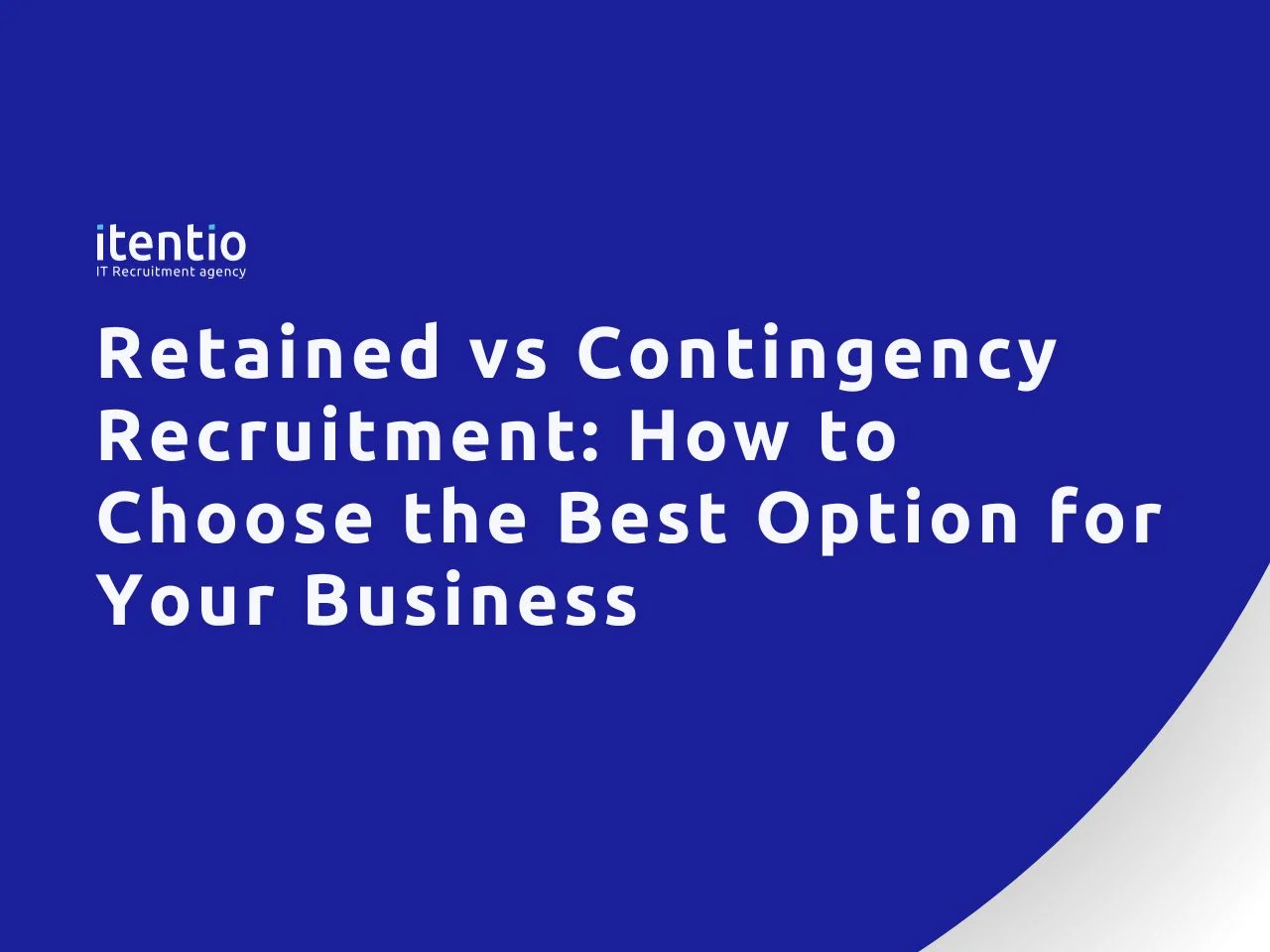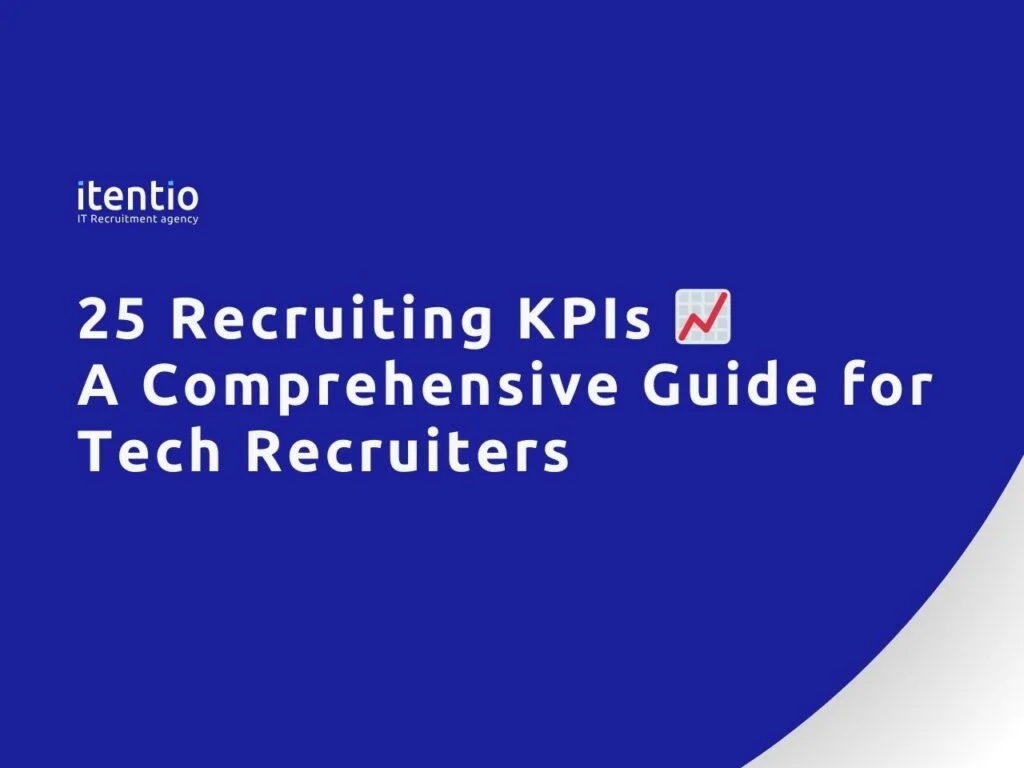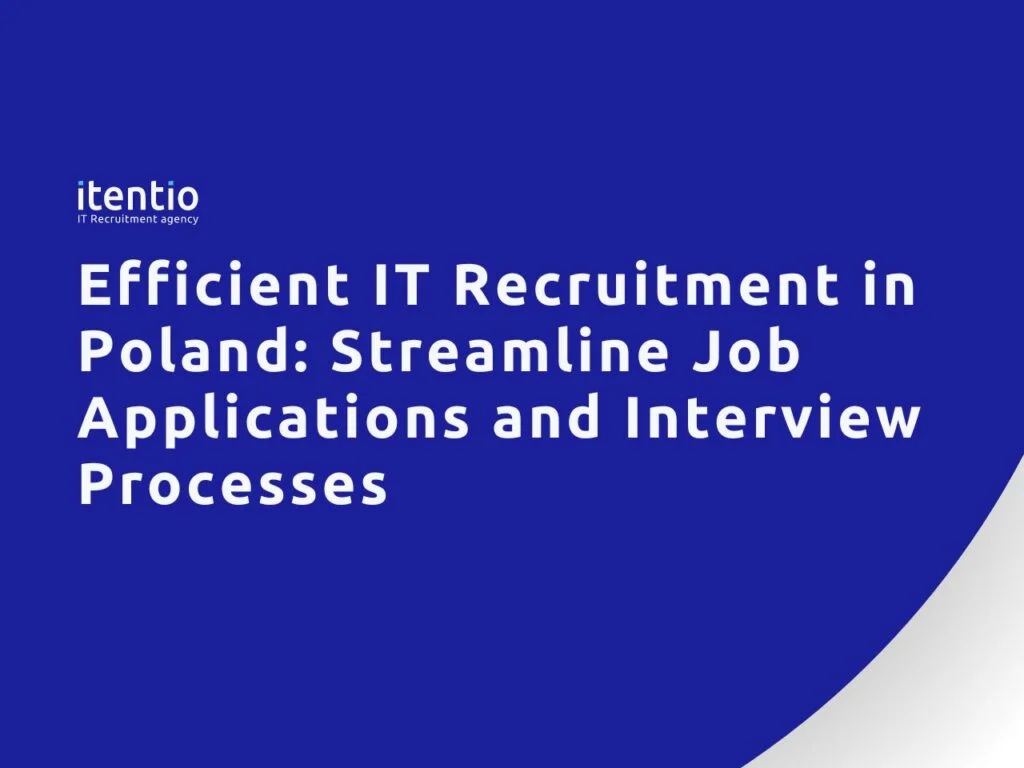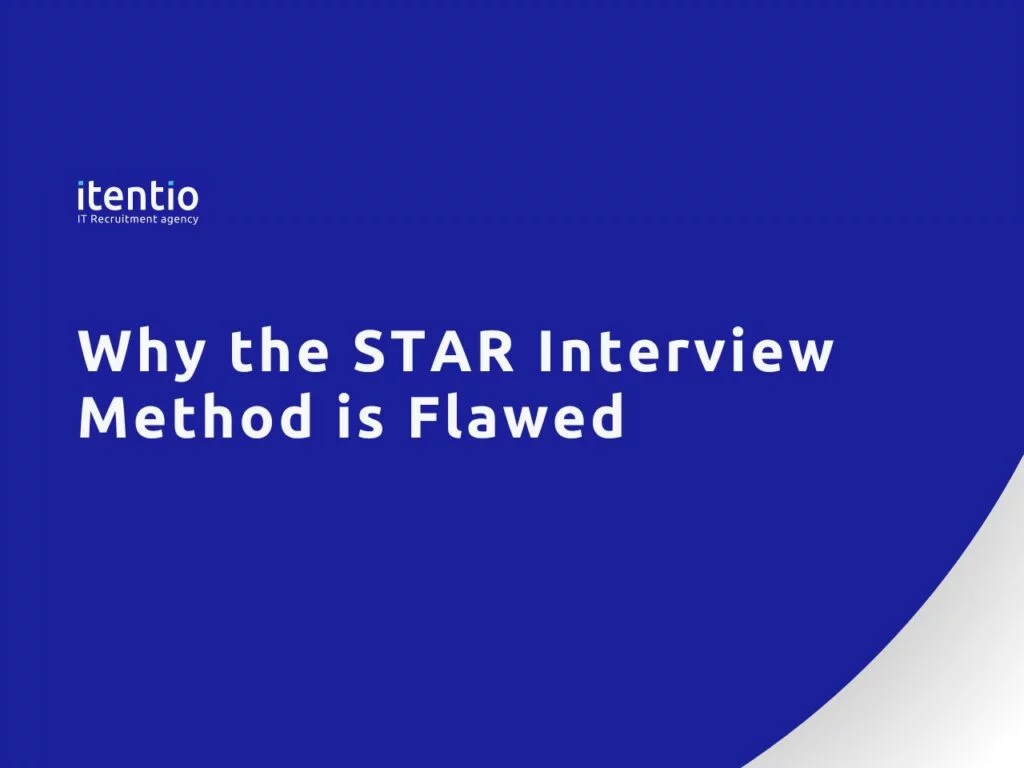This article addresses two contrasting approaches in IT recruiting – contingency and retained models. We will consider both models, look in detail at their differences and what distinguishes them, and suggest what type of recruitment cooperation the tech company should choose if they want to enter into a partnership with an IT recruitment agency.
Introduction
IT Recruitment is the process of finding and hiring the best talent for your business. It is a crucial function that can make or break your success in the competitive information technology market. However, recruitment is more than just a one-size-fits-all solution. There are different services that IT recruitment agencies can offer to benefit their clients. How do you know which one is the best fit for your needs?
The two main types of recruitment agencies’ services are contingency and retained. The services differ in fee structure, approach to service, candidate quality, and exclusivity. This article will compare and contrast contingency and retained recruitment and help you decide which service option is best for your tech company business.
We will cover the following topics:
- What is Contingency Recruitment?
- Advantages of Contingency IT Recruitment
- Disadvantages of Contingency IT Recruitment
- What is Retained Recruitment?
- Advantages of Retained IT Recruitment
- Disadvantages of Retained IT Recruitment
- How do you choose between Contingency and Retained Recruitment?
Let’s start by defining contingency and retained recruitment and how they work.
What is a Contingency Recruitment?
Contingency recruitment is a “no win, no fee” model where recruiters are paid only in case the client hires presented by their agency candidate. It means the client does not have to pay any upfront cost or commitment to the recruiting agency. The recruitment agency only earns a commission after the successful placement, usually a percentage of the candidate’s yearly basic salary.
Advantages of Contingency IT Recruitment
Contingency recruitment is suitable for lower to senior-level roles that require specialization or IT recruitment market experience. It is also ideal for clients who need to fill vacancies quickly and flexibly, as they can access a large pool of candidates from several recruitment agencies. This is mainly because one-off recruitment usually is not an exclusive contract.
Contingency recruitment is a competitive and fast-paced process where recruiters often send as many candidates as possible to increase their chances of making a placement. Additionally, contingency recruitment is typically a no-risk option for the hiring company, as they only pay a fee upon successful placement.
Disadvantages of Contingency IT Recruitment
However, contingency recruitment also has some drawbacks. One of the drawbacks is the lack of exclusivity and additional quality control over the candidates. Since the recruiters are not guaranteed to be paid, they may only invest a little time and effort in screening and vetting the candidates.
The agencies may sometimes send the same candidates to different clients and their HRs/recruiters, resulting in duplicate or unsuitable candidates. While the larger candidate pool may offer more choices, it can also result in an overwhelming influx of resumes and candidate submissions. Sorting through a high volume of applicants can be time-consuming and potentially inefficient.
However, this aspect of candidate CV’s duplicates can be managed by “name checks” conducted by agencies, which means they send the potential candidate’s name and surname to be checked in the clients’ database in order to confirm that this candidate hasn’t recently participated in the recruitment process in this company.
Another drawback is the risk of losing candidates to other companies or recruiters, as there is slightly less loyalty between the parties involved. Contingency recruitment can also lead to a lower retention rate, as the candidates may not be fully committed or satisfied with the job.
What is Retained Recruitment?
Retained recruitment is an exclusive partnership between the client and the IT recruiter or IT recruitment agency. In this cooperation scheme, a portion of the fee is paid upfront, and the rest is paid upon successful placement. To secure the recruitment agency’s service and commitment, the client must pay a retainer, usually a percentage of the estimated total fee or budget (typically around 30%). The recruitment agency then works exclusively for the client and dedicates its recruiters’ time and resources to finding the best candidate for the open position. Another 30% of the fee is paid when the shortlist of candidates is presented to the client. The latter part of the fee (around 40%) is paid upon the successful placement of the candidate.
Advantages of Retained IT Recruitment
Retained IT recruitment is suitable for hiring for executive, C-Level, and Management/Director-level positions requiring niche expertise and experience. It is also excellent for clients who need to fill niche or hard-to-find positions, as they can access a curated pool of candidates who are pre-screened and vetted by the agency recruiters.
Retained recruitment is a collaborative and consultative process where the IT recruitment agency acts as an extension of the client’s team and understands their needs and industry more precisely due to closer cooperation.
Additionally, the retained recruitment model allows for increased confidentiality. Since a single agency carries out the search, the hiring company can maintain a higher level of discretion throughout the process. This can be particularly important when filling management and C-level positions or when confidentiality is crucial for competitive reasons.
Disadvantages of Retained IT Recruitment
However, retained recruitment also has some drawbacks as well. One of them is the higher upfront cost and commitment for the client. Since the client has to pay a retainer, they may be unable to switch to another recruiting agency if they are unsatisfied with the recruitment service or the results.
Given the higher complexity of the C-Level positions and smaller potential candidates’ pipelines, the client may also have to wait longer for the recruitment agency to find suitable candidates and build the talent pool, as the process is more complex and thorough.
Another drawback is the limited pool of candidates from one recruitment agency. Since the agency’s recruiters work exclusively for the client, they may have access to fewer candidates than through a contingency IT recruitment service, where tech companies can work with several agencies. Therefore, these agencies could provide more candidates, so the chances of finding the “hidden gems” on the market are higher.
How to Choose Between Contingency and Retained Recruitment?
As you can see, contingency and retained recruitment have their pros and cons. Depending on your situation and needs, one model may be more suitable or effective than the other. Here are some tips and factors to consider when choosing between them:
- The level and complexity of the role to be filled: Generally, contingency recruitment is better for lower to senior-level roles that might not require a lot of specialization or managerial experience. Retained recruitment is better for executive and C-level roles that require a lot of niche expertise and managing experience.
- The budget and timeline of the hiring process: Typically, contingency recruitment is cheaper and faster than retained recruitment. However, you may have to compromise on the quality and retention of the candidates. Retained recruitment is more expensive and slower than contingency recruitment. However, you may get more value and satisfaction from the candidates.
- The quality and quantity of the candidates required: Usually, contingency recruitment gives you access to a larger pool of candidates from multiple recruitment agencies. However, you may have to deal with duplicate or unsuitable candidates. Retained recruitment gives you access to a curated pool of candidates from one tech recruitment agency. However, you may have to wait longer for the agency’s recruiters to find the right candidate.
- The trust and relationship with the recruitment agency: Contingency recruitment is more transactional and competitive than retained recruitment. You may not have a solid or lasting relationship with each recruitment agency you work with. Retained recruitment, in turn, is more collaborative and consultative than contingency recruitment. Your tech company may have a more robust and ongoing relationship with the recruiter.
To illustrate the differences and similarities between contingency and retained recruitment, here is a table that summarizes the main points:
Comparison between contingency and retained recruitment models
| Contingency Recruitment | Retained Recruitment |
| No upfront cost or commitment | Upfront retainer fee |
| “No win, no fee”. The fee is paid due to the successful candidate’s placement | Part of the fee is paid in advance on a percentage basis, typically in a 30%/30%/40% split |
| Often non-exclusive basis of the cooperation: Several agencies might be involved in working on open positions | Exclusive basis of cooperation: One agency is engaged in filling a particular vacancy |
| Fast and flexible service | Dedicated and focused service |
| Suitable for lower to Senior-level roles | Great for Executive Search and C-level positions |
| Competition with other agencies and potentially with the internal HR/Recruitment team where candidate quality and speed are vital | There is no competition with other agencies and a better cooperation approach from the company opting for the retained model |
| Less expensive service – the fee is about 15-20% of the candidate’s yearly salary | It is a more expensive service, as the retainer fee can exceed 25-30% or more of the candidate’s annual salary |
| Lower retention rate | Longer and more complex process |
| A large pool of candidates from multiple agencies | Limited pool of candidates from one recruitment agency |
| The agency submits many preliminary fit candidates to improve the chance of receiving contingency placement fees. | The agency conducts more in-depth interviews, eliminating weaker candidates. As a result, the agency presents a shortlist of 3-4 suitable candidates. |
| The decision-making power is solely on behalf of the hiring company (client). | In part, the hiring company gives up its decision-making power to the recruiting agency. |
| Less confidential due to attempts to attract active candidates by publications on the job boards and a higher number of agencies involved. | A more confidential approach, as the job position might not even appear on the job boards. |
*Sometimes exclusive contingency recruitment agreements also take place.
Here are some examples of scenarios where contingency or retained recruitment may be more suitable or effective:
- Imagine that you need to fill a Regular Java Developer position as soon as possible. You have a limited budget and are open to working with multiple recruitment agencies. You are not too concerned about the quality or retention of the candidates. In this case, contingency recruitment may be the best option for you.
- What if you must fill a Senior IT Manager or CTO position requiring solid technical skills and managerial experience? You have a generous budget and want to work with one IT recruitment agency that understands your industry and needs. You are looking for the best candidate who can add value and stay with your company for a long time. In this case, retained recruitment may be the best option for you.
Conclusion
This article compares and contrasts contingency and retained recruitment and how these two IT recruitment models can help you find the best talent for your business. We have also provided some tips and factors to consider when choosing between them and examples of scenarios where one may be more suitable or effective than the other.
The main takeaway is that there is no one-size-fits-all solution for IT recruitment. You may benefit more from contingency or retained recruitment, depending on your situation and needs. The key is understanding each option’s pros and cons and how they align with your goals and expectations.
We hope this article has been helpful and informative for you. You can also subscribe to our social media (Linkedin and Facebook) to avoid missing our new content and updates.
If you have any questions or need assistance with your IT recruitment needs, please get in touch with us. We are happy to help you find the best option for your business! If you want to get more free information on How to Hire Top IT Talent in Poland, you can download our free guide below →
Comprehensive Guide For Tech Companies:
How to Hire Top IT Talent in Poland Without Cost Implications
Even If You Have No Hiring Experience in the Polish Job Market




